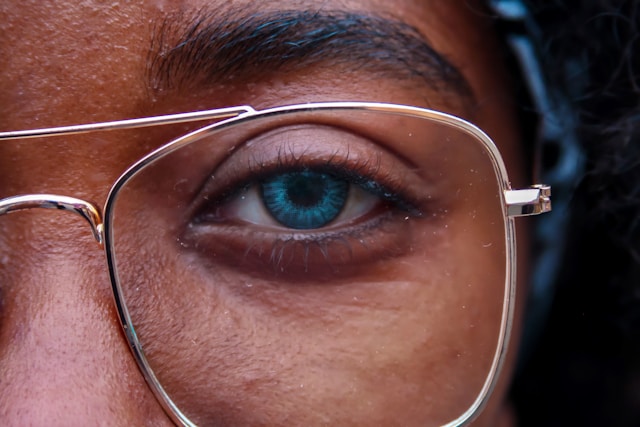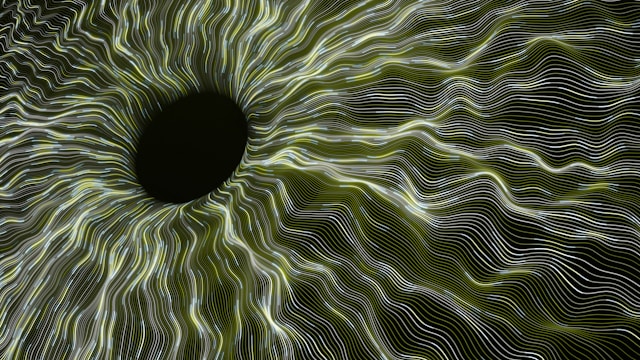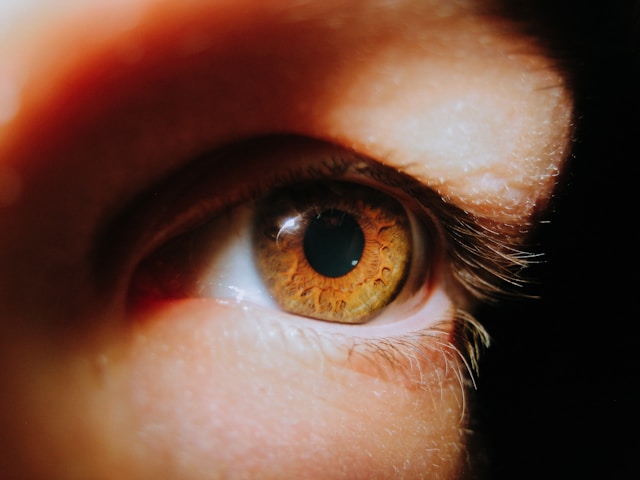Ever spent a few hours glued to your computer, phone, or tablet, only to look up and feel like your eyes are doing a strange disco dance? Maybe they feel dry, gritty, a bit blurry, or even like there’s a tiny sandpit in them? You’re definitely not alone. In our increasingly digital world, where screens are practically extensions of our hands and workspaces, many of us are silently battling something called Digital Eye Strain, sometimes known as Computer Vision Syndrome.
It’s a common complaint, whether you’re a student pulling an all-nighter for an exam, a remote worker spending eight hours on video calls, or simply someone who loves unwinding with a good show on their tablet. The truth is, all this screen time comes with a hidden cost for our eyes. We’re talking about more than just tired eyes; it can lead to headaches, neck pain, and even impact your productivity and overall well-being.
But here’s the good news: you don’t have to choose between your digital life and comfortable eyes! This article is your friendly guide to understanding why your eyes might be feeling the pinch, what those nagging symptoms actually mean, and most importantly, practical, easy-to-follow tips that can bring real relief. We’ll explore the causes of digital eye strain, delve into its symptoms, and arm you with effective prevention tips that you can start using today. By the end of this read, you’ll know exactly how to give your eyes the TLC they deserve and navigate your digital world with greater comfort. Ready to reclaim your eye comfort? Let’s dive in!

The Screen Effect: Why Our Eyes Get Tired in the Digital Age
It’s not just that we’re looking at screens a lot; it’s how we’re looking at them, and what those screens are doing to our eyes, that causes the trouble. Our eyes weren’t exactly designed for hours of staring at pixels.
The Blinking Problem: When Dry Eyes Creep In
Think about it: when you’re deeply engrossed in an email, a video, or a gaming session, how often do you blink? Chances are, it’s a lot less than usual. Normally, we blink about 15-20 times per minute, but studies show this rate can drop by 50% or more when we’re focused on a digital screen. Why does this matter?
- Less Blinking, More Dryness: Every blink coats your eyes with a fresh layer of tears, keeping them moist and comfortable. When you blink less, that tear film evaporates, leaving your eyes feeling dry, gritty, and irritated. It’s like a tiny desert forming on your eyeballs – not pleasant!
- Irritation and Redness: Prolonged dryness can lead to redness, a burning sensation, and an uncomfortable feeling of something “in” your eye. Ever rub your eyes only to make them feel worse? That’s often a sign of dryness.
The Glare & Contrast Game: Pixels vs. Paper
Remember reading a physical book or newspaper? The contrast is usually stable, and there’s no light shining into your eyes from the page. Digital screens are a whole different beast.
- Pixelated Images: Unlike crisp print on paper, digital images are made of tiny pixels. Our eyes have to work harder to focus on these ever-changing, tiny dots, especially when the resolution isn’t ideal. This constant micro-adjustment of the eye muscles leads to fatigue.
- Glare and Reflections: Ever tried working with sunlight blasting onto your screen, or seeing your own reflection staring back at you? Glare from windows, overhead lights, or even reflections on the screen can force your eyes to strain, trying to see past the bright spots. This added effort tires your eyes out super quickly.
- Improper Brightness and Contrast: A screen that’s too bright can feel like a spotlight in a dark room, while one that’s too dim might make you squint. Both extremes make your eyes work harder to adapt, leading to strain.
Blue Light Exposure: The Modern Worry
This one’s a hot topic, and for good reason! Digital screens, especially LED ones, emit significant amounts of blue light. While natural blue light from the sun is good, prolonged exposure to artificial blue light from screens can be a concern.
- Eye Fatigue and Discomfort: Blue light scatters more easily than other colors, making it harder for our eyes to focus on it. This increased “visual noise” can contribute to eye fatigue.
- Sleep Disruption: Beyond just eye strain, blue light exposure, especially in the evenings, can mess with your body’s natural sleep cycle (circadian rhythm) by suppressing melatonin production. This can make it harder to fall asleep, leaving you tired and potentially compounding eye strain the next day.

Spotting the Signs: Common Symptoms of Digital Eye Strain
So, how do you know if you’re experiencing digital eye strain? It’s not always obvious, and sometimes the symptoms can mimic other issues. Here are the most common culprits.
The Obvious Eye Discomfort
These are the direct cries for help from your eyeballs.
- Dry, Irritated, or Watery Eyes: As we discussed, reduced blinking is a major factor. Your eyes might feel scratchy, as if something’s in them, or surprisingly, they might water excessively as your eyes try to compensate for the dryness.
- Blurred Vision (Temporary): Ever look away from your screen and find that everything else looks a little fuzzy for a moment? This temporary blurriness is a classic symptom, especially after prolonged focus on a screen. Your eye muscles are just tired!
- Headaches: Often, these headaches manifest around your temples or forehead. Eye strain can trigger tension in the muscles around your eyes and in your head, leading to that throbbing sensation.
- Double Vision: While less common, in some cases, severe eye fatigue can lead to brief episodes of seeing double, as your eyes struggle to maintain proper alignment.
Beyond the Eyes: The Body’s Reaction
Digital eye strain isn’t just about your eyes; it can impact other parts of your body too, especially your posture.
- Neck and Shoulder Pain: This often happens because you’re leaning in, craning your neck, or holding your body in an awkward position to see your screen better or get closer to the action. Maintaining these strained postures for hours can lead to significant discomfort.
- Light Sensitivity (Photophobia): Your eyes might become more sensitive to bright lights, both from screens and natural light, making you want to squint or even retreat into a darker room.
- Difficulty Concentrating: When your eyes are uncomfortable and your head aches, it’s incredibly hard to focus on tasks. This can lead to reduced productivity, more mistakes, and overall frustration, whether you’re studying for an exam or working on a client project.
Your Eye-Friendly Toolkit: Practical Prevention Tips
Alright, no more just suffering through it! Here’s the good stuff – actionable, easy-to-implement tips that can make a huge difference in preventing and alleviating digital eye strain. Think of these as your eye-care superhero moves!
The 20-20-20 Rule: Your New Best Friend
This is the golden rule of screen breaks, and it’s ridiculously simple yet incredibly effective.
- How it Works: Every 20 minutes, look away from your screen at an object at least 20 feet away for at least 20 seconds.
- Why it Works: This gives your eye muscles a much-needed break from focusing up close and encourages you to blink more, re-wetting your eyes. Set a timer on your phone or use a free app (like Eye Care 20 20 20) to remind you.
- Realistic Scenario: Maya, a student writing her thesis, used to power through hours without a break. Now, she sets a quiet alarm for every 20 minutes. When it goes off, she looks out her window at the trees across the street for 20 seconds. She says it’s dramatically reduced her headaches and blurred vision by the end of the day.
Optimize Your Screen & Workspace: Setup for Success
Your environment plays a huge role in eye comfort. A few tweaks can make a world of difference.
- Position Your Screen Properly: Your screen should be about an arm’s length away from you (around 20-28 inches) and positioned so the top of the screen is at or slightly below eye level. This helps maintain good posture and prevents neck strain.
- Adjust Brightness and Contrast: Match your screen’s brightness to your surrounding environment. If your screen looks like a light source, it’s too bright. If you’re squinting, it’s too dim. Adjust the contrast to a comfortable level where text is crisp.
- Reduce Glare:
- Strategic Lighting: Avoid placing your screen directly in front of or behind a window. Position your screen to the side of a window.
- Anti-Glare Filters: Consider investing in an anti-glare screen filter for your monitor, especially if reflections are a major issue.
- Dim Overhead Lights: If you have bright overhead lighting, try dimming it or using indirect lighting to reduce harsh reflections.
- Clean Your Screen Regularly: Dust and smudges on your screen can reduce clarity and increase glare, forcing your eyes to work harder. A quick wipe with a microfiber cloth goes a long way.
Give Your Eyes a Little Extra Love: Beyond the Basics
Sometimes, your eyes just need a bit more TLC.
- Use Artificial Tears (Eye Drops): If dry eyes are a persistent issue, over-the-counter lubricating eye drops (artificial tears) can provide quick relief. Avoid drops that “get the red out,” as these can cause rebound redness with prolonged use. Consult a pharmacist or eye doctor for recommendations.
- Consider Blue Light Filtering:
- Software Filters: Many operating systems (Windows Night Light, macOS Night Shift) and apps offer built-in blue light filters that warm up your screen’s color temperature, especially in the evenings.
- Blue Light Blocking Glasses: While research is still evolving, some people find relief with blue light filtering glasses, especially if they spend long hours on screens. Talk to your eye doctor before purchasing, as quality varies.
- Get a Comprehensive Eye Exam: This is super important! If you’re experiencing persistent eye strain, headaches, or vision changes, schedule an appointment with an eye care professional. They can rule out underlying eye conditions, check your prescription (you might need glasses or a new prescription!), and offer personalized advice.
Beyond the Screen: Holistic Well-being for Your Eyes
Taking care of your eyes isn’t just about what you do in front of the screen; it’s also about your overall health.
Stay Hydrated and Eat Eye-Healthy Foods
What you put into your body impacts your eyes.
- Drink Plenty of Water: Dehydration can contribute to dry eyes. Make sure you’re drinking enough water throughout the day.
- Nutrients for Your Eyes: Incorporate foods rich in Omega-3 fatty acids (like salmon, flaxseeds), Vitamins A, C, and E (carrots, citrus, nuts), and Zinc (beans, meat). These nutrients are vital for eye health. Think of it as giving your eyes their favorite snacks!
Manage Your Overall Stress
Stress impacts your entire body, including your eyes.
- Stress and Eye Strain: When you’re stressed, your body tenses up, and your eyes can become more sensitive or strained. Headaches are also common stress symptoms that can be mistaken for or exacerbate eye strain.
- Mindfulness and Breaks: Incorporate short meditation breaks, deep breathing exercises, or even just a quick walk away from your desk. Reducing overall stress levels can have a positive ripple effect on your eye comfort.
The Importance of Good Sleep
Your eyes need their beauty sleep too!
- Rest and Repair: Quality sleep allows your eyes to rest and recover from the day’s strain. During sleep, your eyes are lubricated and repaired.
- Blue Light Before Bed: Remember how blue light can disrupt sleep? Try to limit screen time for at least an hour before bed, or use blue light filters on your devices. Give your eyes (and your brain!) a chance to wind down naturally.
Conclusion: Your Vision, Your Comfort, Your Control
Phew! We’ve covered a lot, haven’t we? From the sneaky ways our screens make our eyes tired – like reducing our blink rate and throwing glare our way – to the nagging symptoms like dry eyes, headaches, and even neck pain, digital eye strain is a real and common challenge in our modern lives. But here’s the truly empowering part: you have a lot of control over it!
By adopting simple yet powerful habits like the 20-20-20 Rule, optimizing your workspace, staying hydrated, and getting regular eye check-ups, you can significantly reduce discomfort and protect your precious eyesight. These aren’t complex medical procedures; they’re small, mindful adjustments that can add up to huge improvements in your daily comfort and long-term eye health.
Your eyes work incredibly hard for you every single day, especially in this digital age. It’s time to show them some serious appreciation and give them the care they deserve. Don’t wait until your eyes are screaming for help. Start implementing these tips today and feel the difference. Your future comfortable, clear-sighted self will thank you for it! So, which tip will you try first to give your eyes a break?
Frequently Asked Questions About Digital Eye Strain
Q: Can digital eye strain cause permanent eye damage?
A: Generally, digital eye strain is not thought to cause permanent eye damage. It’s primarily a condition of discomfort and temporary vision problems resulting from prolonged screen use. However, the symptoms can be disruptive and significantly impact your quality of life and productivity. If left unaddressed, persistent symptoms like dry eyes can sometimes lead to more severe issues (like corneal abrasions from extreme dryness), but this is rare. It’s crucial to address symptoms and see an eye doctor if they persist or worsen.
Q: Are blue light glasses effective for preventing digital eye strain?
A: The effectiveness of blue light glasses for preventing digital eye strain is still a subject of ongoing research. Some studies suggest they might help reduce discomfort, particularly from evening blue light exposure that can disrupt sleep. However, other eye care professionals argue that adjusting screen settings (like using “Night Light” or “Night Shift” modes on devices) and practicing the 20-20-20 rule are often more effective. It’s best to consult with an eye care professional to see if blue light glasses are right for your specific situation.
Q: What’s the ideal lighting for my workspace to prevent eye strain?
A: The ideal lighting for your workspace is soft, diffused, and indirect. Avoid bright overhead lights or placing your screen directly in front of or behind a window, as these create glare. If you have a window, position your screen perpendicular to it. Use adjustable task lighting that illuminates your work area without shining directly into your eyes or reflecting off your screen. The overall goal is to eliminate harsh contrasts between your screen and your surroundings.
Q: How often should I get my eyes checked if I use screens a lot?
A: It’s generally recommended that adults get a comprehensive eye exam every one to two years, even if you don’t notice any vision problems. If you spend significant time on digital screens, experience frequent eye strain symptoms, or have a pre-existing eye condition, your eye care professional might recommend more frequent check-ups. Regular exams are crucial for detecting underlying issues and ensuring your prescription (if you have one) is up to date.
Q: Besides screens, what else can cause dry eyes?
A: While digital eye strain often causes dry eyes due to reduced blinking, other factors can also contribute. These include environmental factors (dry climates, air conditioning, heating, wind), certain medications (antihistamines, decongestants, antidepressants), aging (tear production naturally decreases), contact lens use, medical conditions (like Sjögren’s syndrome, rheumatoid arthritis), and allergies. If you have chronic dry eyes, it’s important to discuss it with an eye doctor to determine the underlying cause and the best treatment.

